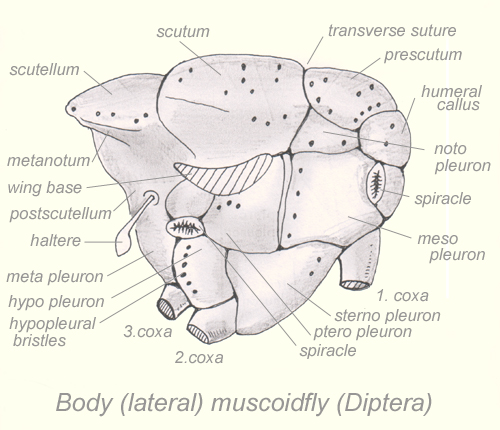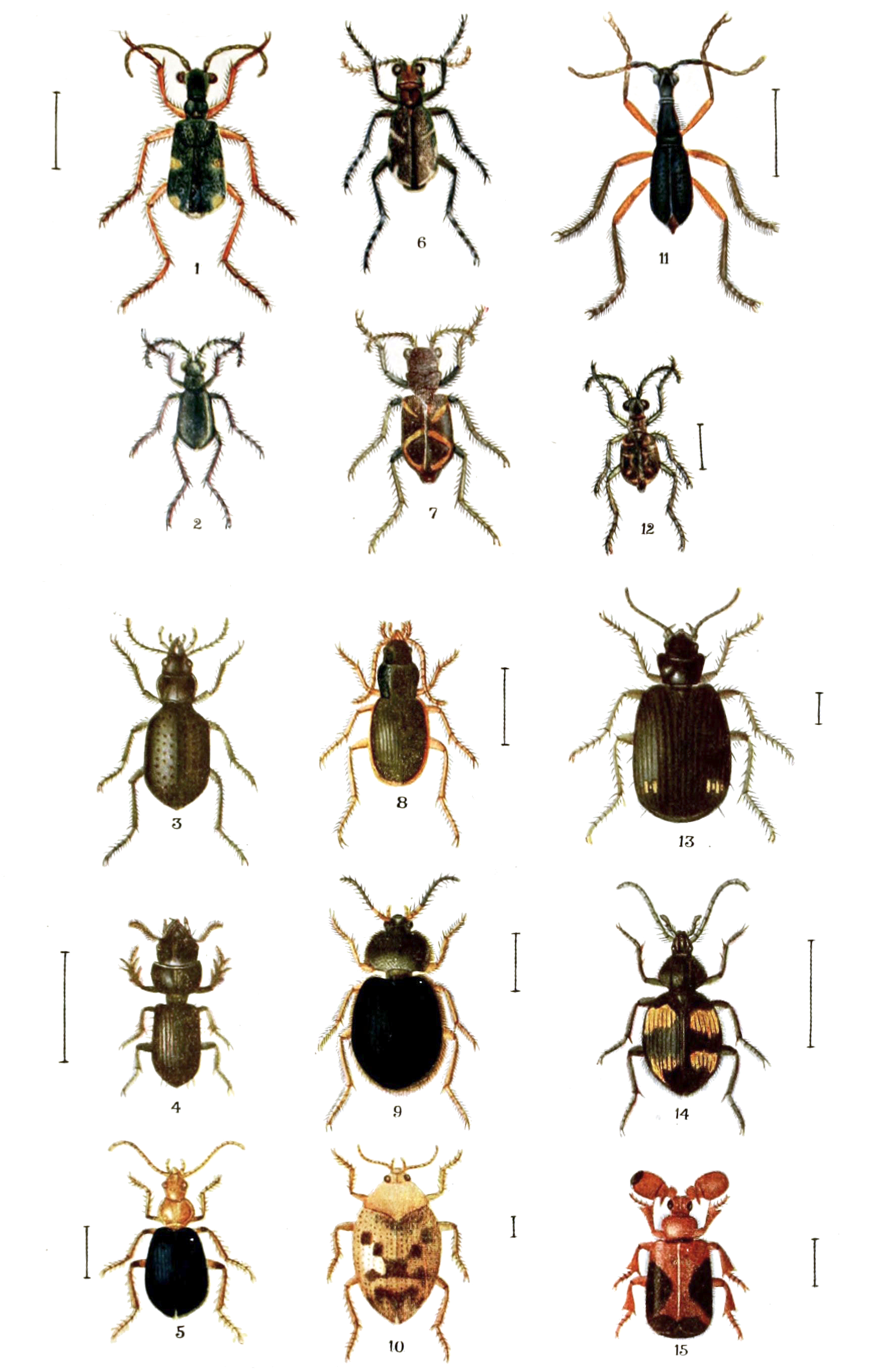|
Notopleuron
The notopleuron (plural notopleura) is a region on an insect thorax. Notopleura are useful in characterizing species, particularly, though not uniquely, in the Order Diptera (the "true flies"). The notopleuron is a thoracic pleurite (a sclerite on the pleuron) situated at the end of the transverse suture of Diptera. Apart from in the Diptera, visible notopleural structures occur in the beetle suborder Adephaga and in certain Hemiptera Hemiptera (; ) is an order (biology), order of insects, commonly called true bugs, comprising over 80,000 species within groups such as the cicadas, aphids, planthoppers, leafhoppers, Reduviidae, assassin bugs, Cimex, bed bugs, and shield bugs. ..., but this list is not exhaustive. References * Zombori, L. & Henrik Steinmann (1999) Dictionary of Insect Morphology. Walter de Gruyter. Insect anatomy {{insect-anatomy-stub it:Glossario entomologico#notopleuron ... [...More Info...] [...Related Items...] OR: [Wikipedia] [Google] [Baidu] |
Thorax (arthropod Anatomy)
The thorax is the midsection ( tagma) of the hexapod body (insects and entognathans). It holds the head, legs, wings and abdomen. It is also called mesosoma or cephalothorax in other arthropods. It is formed by the prothorax, mesothorax and metathorax and comprises the scutellum; the cervix, a membrane that separates the head from the thorax; and the pleuron, a lateral sclerite of the thorax. In dragonflies and damselflies the mesothorax and metathorax are fused together to form the synthorax. In some insect pupae, like the mosquitoes', the head and thorax can be fused in a cephalothorax. Members of suborder Apocrita (wasps, ants and bees) in the order Hymenoptera have the first segment of the abdomen fused with the thorax, which is called the propodeum. The head is connected to the thorax by the occipital foramen, enabling a wide range of motion for the head. In most flying insects, the thorax allows for the use of asynchronous muscles Asynchronous muscles are muscles in ... [...More Info...] [...Related Items...] OR: [Wikipedia] [Google] [Baidu] |
Order (biology)
Order ( la, wikt:ordo#Latin, ordo) is one of the eight major hierarchical taxonomic ranks in Linnaean taxonomy. It is classified between Family_(biology), family and Class_(biology), class. In biological classification, the order is a taxonomic rank used in the classification of organisms and recognized by the nomenclature codes. An immediately higher rank, superorder, is sometimes added directly above order, with suborder directly beneath order. An order can also be defined as a group of related families. What does and does not belong to each order is determined by a taxonomist, as is whether a particular order should be recognized at all. Often there is no exact agreement, with different taxonomists each taking a different position. There are no hard rules that a taxonomist needs to follow in describing or recognizing an order. Some taxa are accepted almost universally, while others are recognized only rarely. The name of an order is usually written with a capital letter. Fo ... [...More Info...] [...Related Items...] OR: [Wikipedia] [Google] [Baidu] |
Diptera
Flies are insects of the order Diptera, the name being derived from the Greek δι- ''di-'' "two", and πτερόν ''pteron'' "wing". Insects of this order use only a single pair of wings to fly, the hindwings having evolved into advanced mechanosensory organs known as halteres, which act as high-speed sensors of rotational movement and allow dipterans to perform advanced aerobatics. Diptera is a large order containing an estimated 1,000,000 species including horse-flies, crane flies, hoverflies and others, although only about 125,000 species have been described. Flies have a mobile head, with a pair of large compound eyes, and mouthparts designed for piercing and sucking (mosquitoes, black flies and robber flies), or for lapping and sucking in the other groups. Their wing arrangement gives them great maneuverability in flight, and claws and pads on their feet enable them to cling to smooth surfaces. Flies undergo complete metamorphosis; the eggs are often laid on the l ... [...More Info...] [...Related Items...] OR: [Wikipedia] [Google] [Baidu] |
Pleurite
A sclerite (Greek , ', meaning "hard") is a hardened body part. In various branches of biology the term is applied to various structures, but not as a rule to vertebrate anatomical features such as bones and teeth. Instead it refers most commonly to the hardened parts of arthropod exoskeletons and the internal spicules of invertebrates such as certain sponges and soft corals. In paleontology, a scleritome is the complete set of sclerites of an organism, often all that is known from fossil invertebrates. Sclerites in combination Sclerites may occur practically isolated in an organism, such as the sting of a cone shell. Also, they can be more or less scattered, such as tufts of defensive sharp, mineralised bristles as in many marine Polychaetes. Or, they can occur as structured, but unconnected or loosely connected arrays, such as the mineral "teeth" in the radula of many Mollusca, the valves of Chitons, the beak of Cephalopod, or the articulated exoskeletons of Arthropoda. When scl ... [...More Info...] [...Related Items...] OR: [Wikipedia] [Google] [Baidu] |
Sclerite
A sclerite (Greek , ', meaning "hard") is a hardened body part. In various branches of biology the term is applied to various structures, but not as a rule to vertebrate anatomical features such as bones and teeth. Instead it refers most commonly to the hardened parts of arthropod exoskeletons and the internal spicules of invertebrates such as certain sponges and soft corals. In paleontology, a scleritome is the complete set of sclerites of an organism, often all that is known from fossil invertebrates. Sclerites in combination Sclerites may occur practically isolated in an organism, such as the sting of a cone shell. Also, they can be more or less scattered, such as tufts of defensive sharp, mineralised bristles as in many marine Polychaetes. Or, they can occur as structured, but unconnected or loosely connected arrays, such as the mineral "teeth" in the radula of many Mollusca, the valves of Chitons, the beak of Cephalopod, or the articulated exoskeletons of Arthropoda. When ... [...More Info...] [...Related Items...] OR: [Wikipedia] [Google] [Baidu] |
Pleuron (insect)
The pleuron (pl. pleura, from Greek side, rib) is a lateral sclerite of thoracic segment of an insect between the tergum and the sternum. The terms pro-, meso- and metapleuron The metathorax is the posterior of the three segments in the thorax of an insect, and bears the third pair of legs. Its principal sclerites ( exoskeletal plates) are the metanotum (dorsal), the metasternum (ventral), and the metapleuron (lateral) ... are used respectively for the pleura of the first, second and third thoracic segments. References Insect anatomy Thorax (human anatomy) {{Insect-anatomy-stub ... [...More Info...] [...Related Items...] OR: [Wikipedia] [Google] [Baidu] |
Suture (anatomical)
In anatomy, a suture is a fairly rigid joint between two or more hard elements of an organism, with or without significant overlap of the elements. Sutures are found in the skeletons or exoskeletons of a wide range of animals, in both invertebrates and vertebrates. Sutures are found in animals with hard parts from the Cambrian period to the present day. Sutures were and are formed by several different methods, and they exist between hard parts that are made from several different materials. Vertebrate skeletons The skeletons of vertebrate animals (fish, amphibians, reptiles, birds, and mammals) are made of bone, in which the main rigid ingredient is calcium phosphate. Cranial sutures The skulls of most vertebrates consist of sets of bony plates held together by cranial sutures. These sutures are held together mainly by Sharpey's fibers which grow from each bone into the adjoining one. Sutures in the ankles of land vertebrates In the type of crurotarsal ankle which is found i ... [...More Info...] [...Related Items...] OR: [Wikipedia] [Google] [Baidu] |
Adephaga
The Adephaga (from Greek ἀδηφάγος, ''adephagos'', "gluttonous") are a suborder of beetles, and with more than 40,000 recorded species in 10 families, the second-largest of the four beetle suborders. Members of this suborder are collectively known as adephagans. The largest family is Carabidae (ground beetles) which comprises most of the suborder with over 40,000 species. Adephaga also includes a variety of aquatic beetles, such as predaceous diving beetles and whirligig beetles. Anatomy Adephagans have simple antennae with no pectination or clubs. The galeae of the maxillae usually consist of two segments. Adult adephagans have visible notopleural sutures. The first visible abdominal sternum is completely separated by the hind coxae, which is one of the most easily recognizable traits of adephagans. Five segments are on each foot. Wings The transverse fold of the hind wing is near the wing tip. The median nervure ends at this fold, where it is joined by a cro ... [...More Info...] [...Related Items...] OR: [Wikipedia] [Google] [Baidu] |
Hemiptera
Hemiptera (; ) is an order (biology), order of insects, commonly called true bugs, comprising over 80,000 species within groups such as the cicadas, aphids, planthoppers, leafhoppers, Reduviidae, assassin bugs, Cimex, bed bugs, and shield bugs. They range in size from to around , and share a common arrangement of piercing-sucking Insect mouthparts, mouthparts. The name "true bugs" is often limited to the suborder Heteroptera. Entomologists reserve the term ''bug'' for Hemiptera or Heteroptera,Gilbert Waldbauer. ''The Handy Bug Answer Book.'' Visible Ink, 1998p. 1. which does not include other arthropods or insects of other orders such as Ant, ants, Bee, bees, Beetle, beetles, or Butterfly, butterflies. In some variations of English, all Terrestrial animal, terrestrial arthropods (including non-insect arachnids, and myriapods) also fall under the Colloquialism, colloquial understanding of ''bug''. Many insects with "bug" in their common name, especially in American English, belo ... [...More Info...] [...Related Items...] OR: [Wikipedia] [Google] [Baidu] |
Insect Anatomy
Insect morphology is the study and description of the physical form of insects. The terminology used to describe insects is similar to that used for other arthropods due to their shared evolutionary history. Three physical features separate insects from other arthropods: they have a body divided into three regions (called tagmata) (head, thorax, and abdomen), have three pairs of legs, and mouthparts located ''outside'' of the head capsule. It is this position of the mouthparts which divides them from their closest relatives, the non-insect hexapods, which includes Protura, Diplura, and Collembola. There is enormous variation in body structure amongst insect species. Individuals can range from 0.3 mm ( fairyflies) to 30 cm across ( great owlet moth); have no eyes or many; well-developed wings or none; and legs modified for running, jumping, swimming, or even digging. These modifications allow insects to occupy almost every ecological niche on the planet, except the deep ... [...More Info...] [...Related Items...] OR: [Wikipedia] [Google] [Baidu] |


_(10144905255).jpg)



